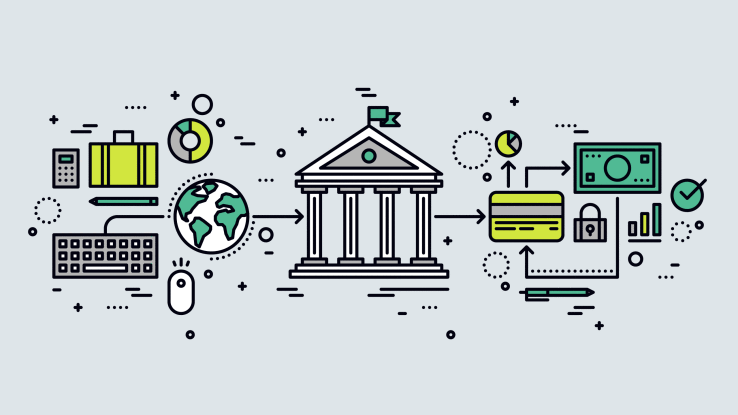
Transforming how retail banking works
By Choon Yan
Mobile is changing how people work, travel, read, communicate, shop and many other lifestyle behaviors. In the Internet Trends 2015 report by KPCB, mobile engagement is better than ever, with three hours of time spent per day on mobile devices in 2015 compared to an hour per day five years ago (a 300 percent increase). Adding to this, there was 69 percent and 23 percent annual worldwide growth inmobile data traffic and smartphone subscribers (2.1 billion) in 2014, respectively.
It is no surprise. Hip and young consumers are already soaked in the world of emerging service landscapes through mobile. Near-magical push-button on-demand services like Uber have provided a new form of consumer empowerment and increased expectations. As the millennials move on to their first jobs, they are going to expect the same or something better, from setting up accounts to getting their first investment and credit card.
Because of the legacy banking infrastructure that dates back to the 1970s, it is not an easy feat for current brick-and-mortar banks to introduce a new stack of technology to improve experiences. Apps on smartphones have made consumers’ lives better, but currentbanking apps have failed to catch up to them.
Despite banks in all major developed markets providing mobile options, there is a new wave of emerging startups building digital, mobile and online-only banks from scratch. It makes sense when you imagine the man-hours lost to handling paperwork to open an account or apply for a loan, the exorbitant fees for using your credit card abroad, having onerous overdraft charges and non-responsive mobile apps that can only transfer money and check balances.
The idea behind these mobile banking startups is to influence how retail banking works in the 21st century by eliminating the extra costs of running physical branch operations and maintenance of legacy infrastructure, and passing on the savings to share with their digital-savvy consumers. There are several unique selling points offered by mobilebanking, and it presents many amazing opportunities.
Mobile first
London’s office rental prices can be exorbitant. Tandem, the second digital-only bank to be licensed by the Bank of England this year, understands that physical infrastructure costs can be reduced. Instead of opening retail stores, it utilizes call centers to help consumers go through the bigger transactions and still preserve a service-oriented experience.
A common trait among these mobile banks are slick and beautiful app interfaces to open accounts and manage various financial activities. The Danish firm Lunar Way decided to take this up a notch by partnering with local banks for regulatory strengths, so as to focus on technology and user experiences.
Cross-sell and up-sell
A look at the fees section on a traditional banking account page spells out lots of complex situations that will cost consumers. In contrast, banks should provide value first — account holders can be monetized, in the long run, with other financial products, but not on a per-transaction basis. For example, Monese, allows new arrivals to have a current account in the U.K. regardless of citizenship and to hold multiple currency balances, which help to avoid foreign exchange fees for trips. Leveraging this, it attacks the segment on international remittances, which is 10 times cheaper than traditional bank offerings.
More and more people are going to start engaging banking apps.
Another instance is Mondo, valued at $43 million before launch. Mondo understands the power of context in helping their consumers. The startup recognizes consumers might need to borrow when their balance is low. Loans can be communicated to consumers in real time through instant messaging, just before they overdraft. It is no surprise; their experienced team members were the former heads at Allied Irish Bank and Mizuho International.
Virtual financial advisor
Don’t you feel like having an intelligent Siri as a financial advisor instead of one that keeps pestering you to buy irrelevant financial products? Mobile banks are evolving to make money work for you through their platforms (minus the voice, for now).
Blockchain-inspired Secco wants to offer its consumers a marketplace that will consolidate best offers from various financial providers and serve them based on personalized intent. Another excitement that Secco brings is to help you reclaim and monetize your data based on how interesting you are in a tokenized method; for example, tweeting or other non-financial actions to receive a voucher in return.
Fidor, a German mobile banking startup that just launched in the U.K., reimagined the concept of financial advisor with its online community, where the community can be financially incentivized to provide financial advice, as well as evaluate and review financial products to other members. This greatly injects trust and transparency in the purchase process of financial products.
Data driven
From the cyberattack on JPMorgan Chase, which resulted in close to 76 million household accounts being compromised two years ago, to HSBC’s two days down time on onlinebanking systems after DDOS attacks earlier this year, it is no doubt the banks that are still struggling with the hardening of their legacy infrastructure, which were layered over the decades. With its own brand new stack of banking software, Peter Thiel-backed Number26and $70 million-funded Starling put their hearts into reliability through data.
Consumers are notified in real time about new transactions so as to take action in fraud situations and instantly disable debit cards if the card is suspected to be lost. Data science can be useful in detecting fraud: If the consumer’s phone location is in London and a card is being used in Berlin, verification can be solicited. BBVA-backed Atom’s CEO Mark Mullen, former CEO of first direct, HSBC’ telephone/online bank, intends to use gamification to make banking fun, and a mix of biometric data (such as selfies, voice and fingerprint) to increase security after being the first digital bank to secure a license in the U.K.
With these benefits, more and more people are going to start engaging banking apps that can fit in every part of their lives. Managing Partner Vladislav Solodkiy of Life.SREDA, a fintech-focused VC, echoes the same sentiments. “It is a great opportunity for investors especially Asia to be in touch with innovative solutions in mobile banking. This can be seen as we have achieved prior successes through exits in our first fund — Simple, Moven, Rocketbank.”
Yes, developing markets like Southeast Asia fit the prerequisites for this to kick off, given their large amount of underbanked and unbanked consumers who have access to smartphones as well as low rates of home broadband and urbanization that make traditional methods inaccessible to them. Beside Singapore in the region, the digital bankingpenetration is depressingly low, ranging from 13-44 percent in 2014 — even though consumers in their 20s are 50 percent more willing than their parents to try mobilebanking.
If banks are unable to continue to rapidly innovate and create new, user-friendly and differentiated mobile offerings and effectively advertise and distribute on these platforms, they could lose market share to existing competitors or new entrants, and their future growth and bottom line could adversely take a hit. In other words, banks have to start disrupting themselves by acquiring new technologies and/or partnering with technopreneurs before they become a part of history.
The winners will be the ones that put consumers’ digitalized lifestyles as the core strategy.
This article does not represent the thoughts, intentions, plans or strategies of my employer. It is solely my opinion.





